33 intriguing facts from US history you probably never knew
Quirky facts from American history
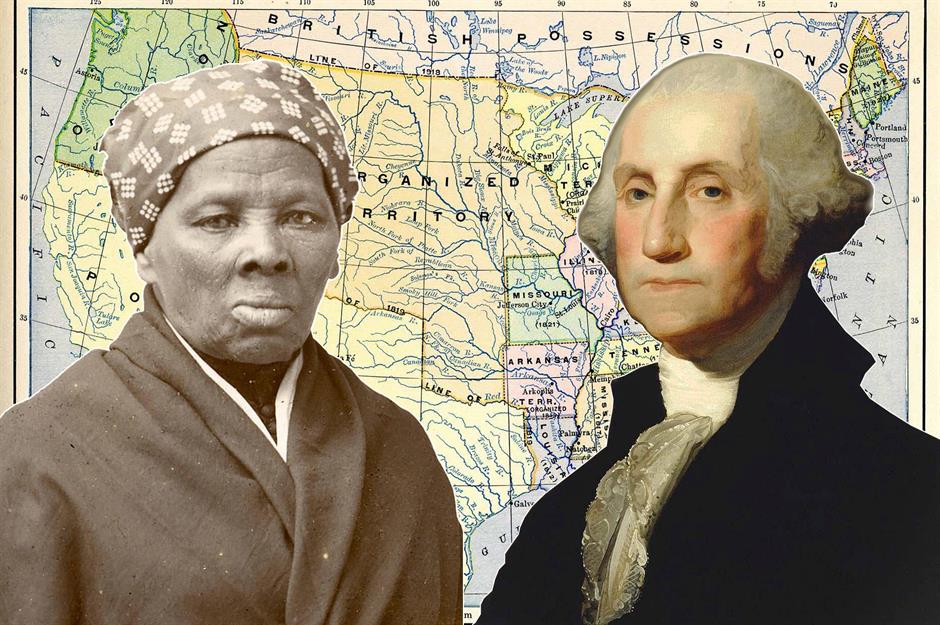
You can probably name the Founding Fathers, you might know which city was once called New Amsterdam and may even be able to recite the Gettysburg Address. But there’s more to America’s history than what you learn in school. From a spelling error on the Liberty Bell to the president who once kept bear cubs at the White House, this is the historical trivia you won’t find in most textbooks.
Read on to find out some of our favourite fun facts from US history...
America’s oldest city isn’t the one you think

It’s often assumed that Jamestown, Virginia is the oldest city in the US, but in fact it was just the first permanent colony established by the English in May 1607. The oldest city accolade goes instead to St Augustine, Florida, which was founded by the Spanish in 1565. Aside from a brief interlude under British rule, it remained the capital of 'Spanish Florida' for more than 250 years.
Independence Day shouldn't be 4 July
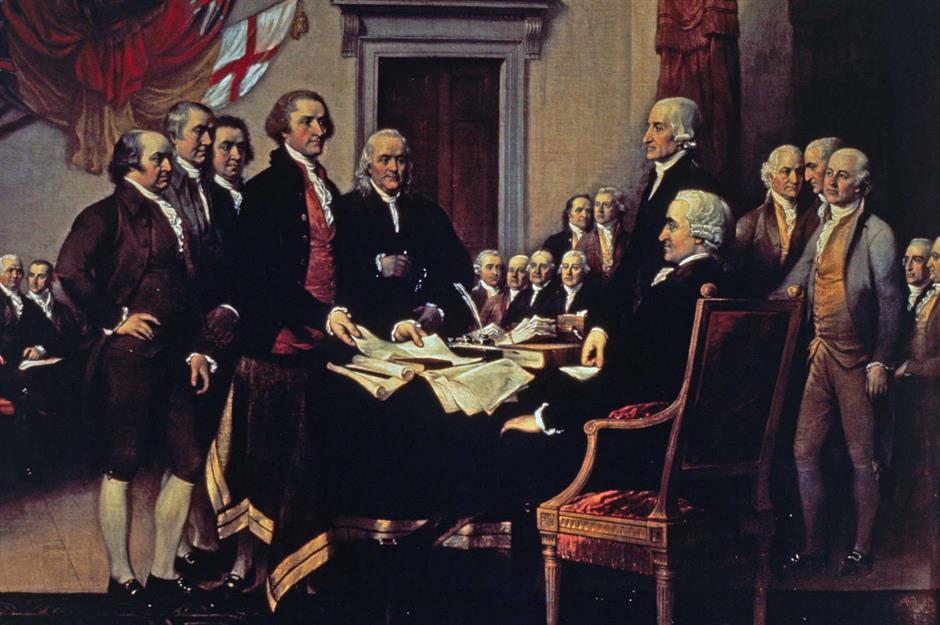
Independence Day is one of America’s most iconic holidays, but was 4 July 1776 really the day the country declared its freedom from Great Britain? The truth is that the pivotal moment came on 2 July, when Congress voted to approve the resolution for independence. But it took another two days to finalise the wording of the Declaration, which is why 4 July holds the official title – and the nationwide celebration.
John Hancock’s signature entered American slang

While we’re on the subject of the Declaration of Independence, have you ever wondered why Americans refer to a signature as a 'John Hancock'? It all comes down to the looping cursive favoured by the Founding Father, who signed his name in such large, clear writing that it could supposedly be read without spectacles.
Love this? Follow our Facebook page for more fun facts and travel inspiration
The symbol of US independence was made in Britain

The Liberty Bell is a must-see attraction in Philadelphia – a city often called the 'birthplace of America', as it’s where the Founding Fathers met to sign the Declaration of Independence and, later, the Constitution.
This symbol of American independence was among the bells rung on 8 July 1776, as the declaration was read out to the public. But despite its associations with freedom from Britain, the bell was actually forged at the Whitechapel Foundry in London in 1751, the same place Big Ben was made.
There’s a spelling mistake on the Liberty Bell
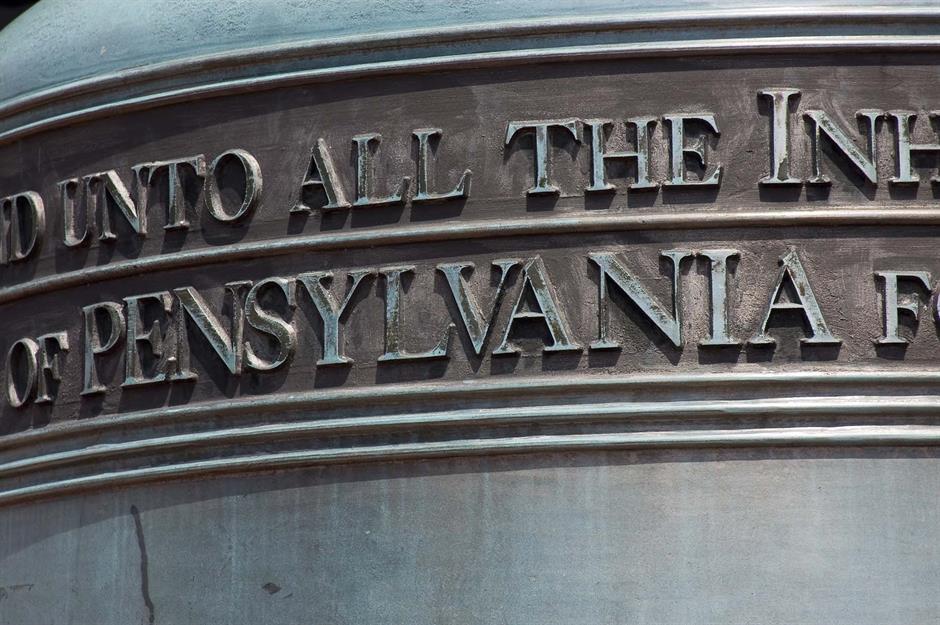
The Liberty Bell is famously inscribed with the words of a bible verse from Leviticus – 'Proclaim liberty throughout all the land unto all of the inhabitants thereof'. It also includes information about the Pennsylvania Assembly.
But look closer and you might just spot a spelling error as seen on this replica. It’s attributed to the state of 'Pensylvania', rather than Pennsylvania – though this was an accepted spelling at the time.
George Washington wasn’t the first president

Yes, really. George Washington was, of course, the first president elected under the terms of the US Constitution. But before that, the Articles of Confederation required a 'President of the United States in Congress Assembled' to serve a one-year term.
The first of eight men to take up the baton was John Hanson (pictured), who served from 5 November 1781 until 3 November 1782. In just 12 months, he set up the Treasury and the Foreign Affairs Department and removed all foreign troops.
The Constitution was inspired by Native Americans
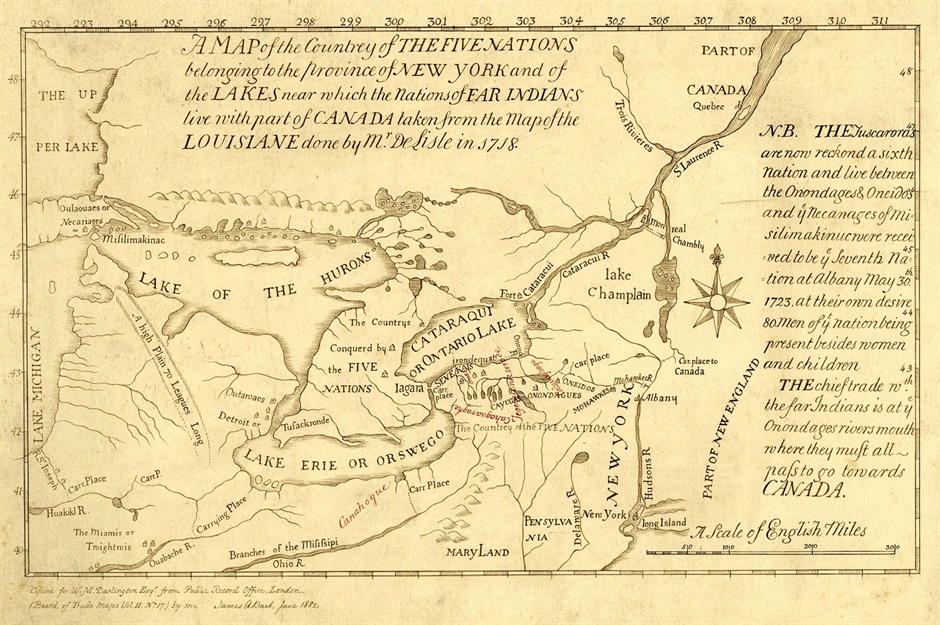
The Constitution – written in 1787, ratified in 1788 and in operation since 1789 – was clearly groundbreaking, but it owes a debt of gratitude to the Iroquois Confederacy. This league of six Indigenous nations – namely the Mohawk, Oneida, Onondaga, Cayuga, Seneca and later the Tuscarora – was based in modern-day Ontario, New York and Pennsylvania.
The Confederacy's Great Law of Peace, which let them govern together while blending harmony with sovereignty, especially influenced the constitutional research of John Adams.
George Washington delivered the shortest inaugural address – by far
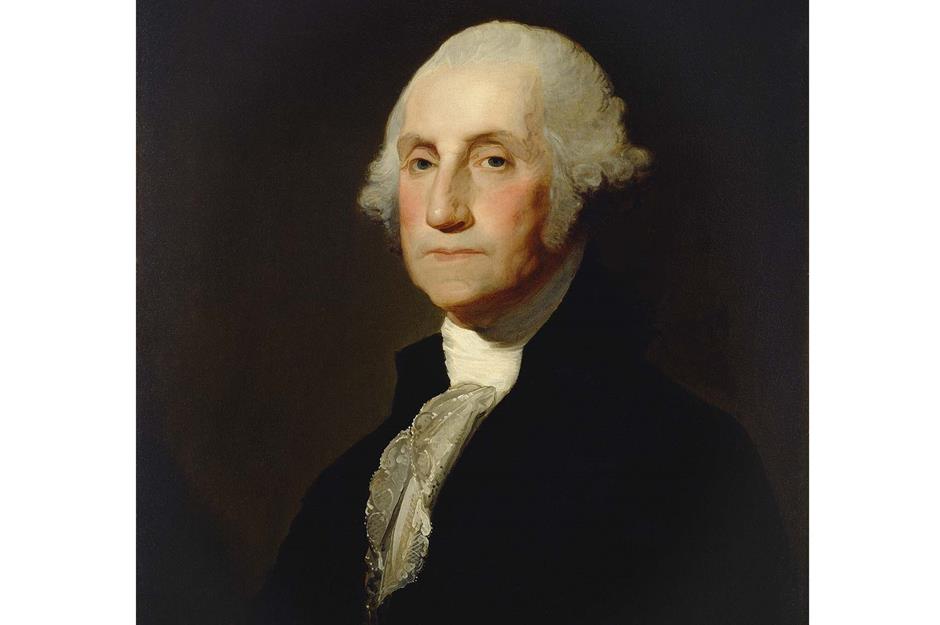
If you’ve ever zoned out while watching a presidential inauguration, you might wish that modern politicians would take a leaf out of George Washington’s book.
His second inaugural address in 1793 is the shortest on record at just 135 words – barely more than the oath of office itself – with some speculating that his lifelong dental troubles and ill-fitting dentures may have made speaking difficult. The longest address was by William Henry Harrison in 1841, at 8,445 words.
Jefferson kept pet bear cubs in the White House

Did you know one former president kept two grizzly bears on the front lawn of the White House? In October 1807, explorer Captain Zebulon Pike picked up a pair of cubs and sent them to President Thomas Jefferson, who planned to donate them for display at Peale’s Museum.
They apparently spent two months on public view in a cage in front of the White House, leading political opponents to nickname it the 'bear garden' after the rowdy venues of the Elizabethan era.
An alligator in the East Room?

That wouldn’t be the last time a deadly creature was let loose in the presidential residence. Legend has it that John Quincy Adams (pictured) was given a pet alligator by the Marquis de Lafayette and put it in the East Room bathtub to give unsuspecting visitors a scare.
Historians are sceptical, although First Families have since kept sheep, a dairy cow, a badger, a parrot and plenty of cats and dogs, so perhaps it's not such a stretch after all.
Salem supposedly put tomatoes on trial

Most people are familiar with the Salem Witch Trials, but have you ever heard of the Salem Tomato Trial? In 1820, tomatoes were widely believed to be poisonous. Local legend has it that Colonel Robert Gibbon Johnson boldly challenged this myth in Salem, New Jersey, by eating a tomato in front of a crowd outside the courthouse. He survived without issue, and tomatoes became a staple on the nation's menu.
The US has no legally defined official language
Many countries have their national language written into the constitution – Canada lists both French and English, for instance. However, despite an executive order signed in March 2025 designating English as the official language, the US doesn’t have an enshrining law on its statute books.
According to the US Census Bureau, the 350-plus languages most used in America include Spanish, Mandarin Chinese, Vietnamese and Arabic, along with Native American languages such as Navajo, Yupik, Dakota and Apache.
The shortest presidential term was just 31 days
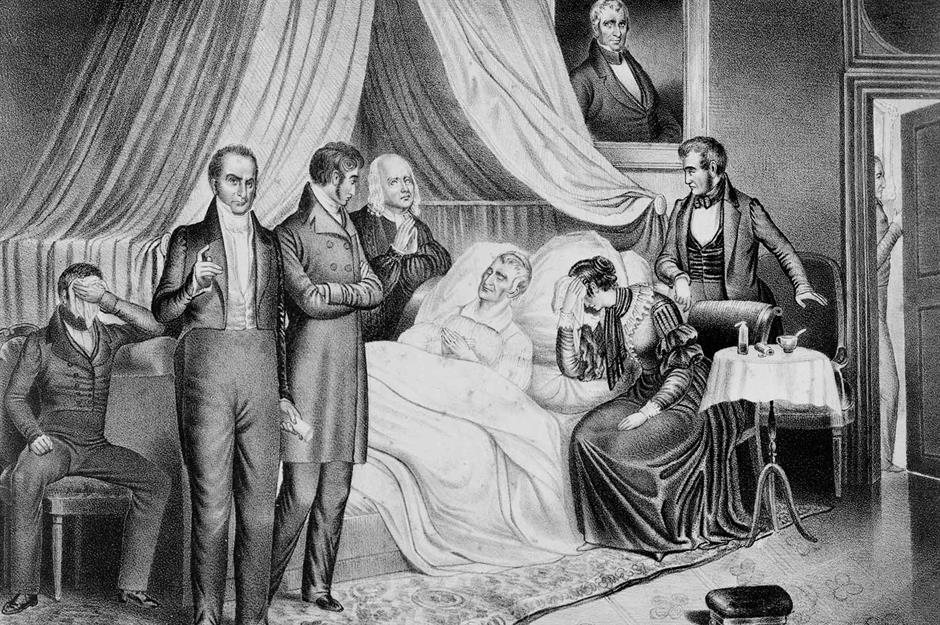
Some say a week is a long time in politics – but a month was all too short for William Henry Harrison, the ninth president of the United States. He was inaugurated in 1841 but died just 31 days later, making him the first president to die in office and the holder of the shortest ever tenure in the White House.
The US has the world’s longest land border

When the Oregon Treaty was signed between Britain and the US on 15 June 1846, it removed the risk of a third Anglo-American War by settling sovereignty questions over the Pacific Northwest.
By extending an existing boundary along the 49th parallel, it also brought the soon-to-be states of Oregon, Washington, Idaho and Montana formally under American control, creating the world’s longest international land border. At 5,525 miles (8,891km), the US-Canada border still holds the record today.
The Underground Railroad wasn’t a railroad
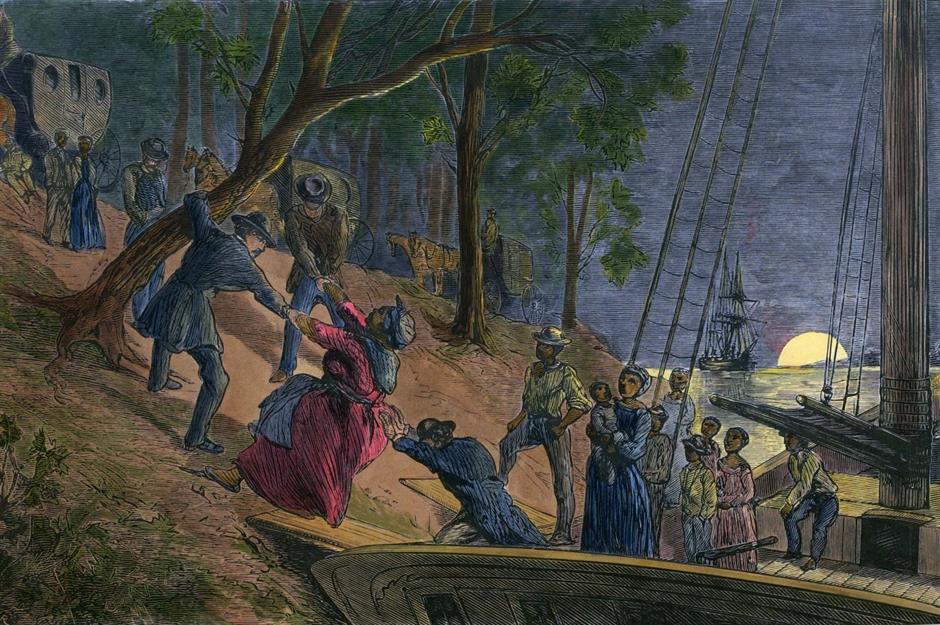
It might have had 'conductors' and 'cargo', but the Underground Railroad – a series of routes that helped up to 100,000 enslaved people escape to freedom – had nothing to do with trains.
It was a description of the network of people and places that led from the American South to the relative liberty of Canada or Mexico, with safe houses or 'stations' along the way. Helpers who provided food, shelter and clean clothes were 'stationmasters', while those leading the way were 'conductors'.
Harriet Tubman was a secret spy
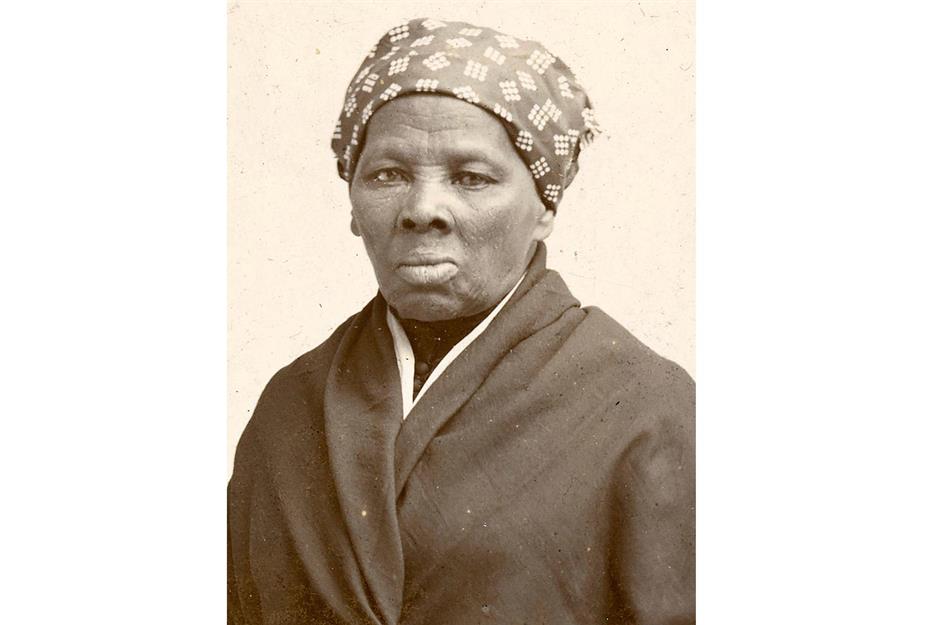
She’s best known for her leading role in the Underground Railroad, but Harriet Tubman’s work didn’t stop there. During the Civil War, she served as a nurse in South Carolina, tending to African-American soldiers and newly emancipated slaves, and even set up a spy ring to gather intelligence for the Union Army.
During the Combahee Ferry Raid in June 1863, Tubman played a key role in the mission, which resulted in the liberation of 700 enslaved people. While she didn’t command the operation, she was the first woman to lead a major military operation, providing crucial intelligence that ensured its success.
Abraham Lincoln created the secret service – on the day he was killed
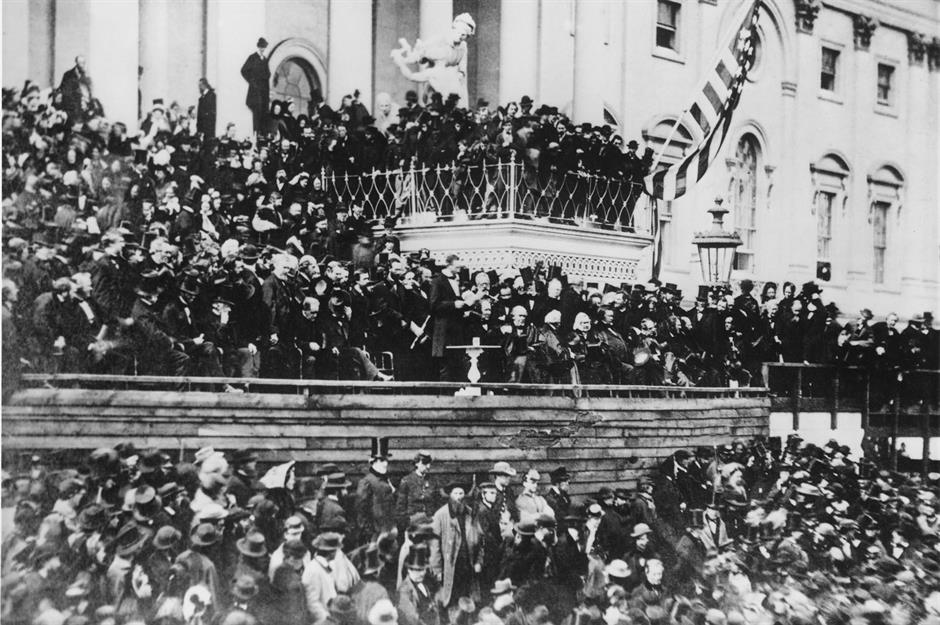
When John Wilkes Booth took his fateful shot at Ford’s Theatre on 14 April 1865, assassinating President Abraham Lincoln, it shook the nation to its core. Just hours earlier, Lincoln had signed an order to establish the US Secret Service – the agency that would take on the responsibility of protecting the president – but it came too late to save him.
The Democrat donkey comes from campaign clashes

Ever wondered why the Democrats are represented by the symbol of a donkey? During the 1828 presidential race, opponents of Andrew Jackson labelled him a 'jackass' and it stuck, with Jackson even using it on his own posters.
The Republican elephant has roots in the Civil War, when 'seeing the elephant' meant serving in battle. It was linked to the party after being used in an 1874 Harper’s Weekly sketch by renowned political cartoonist Thomas Nast – who also drew our modern-day image of Santa Claus.
Chester A. Arthur was a dude
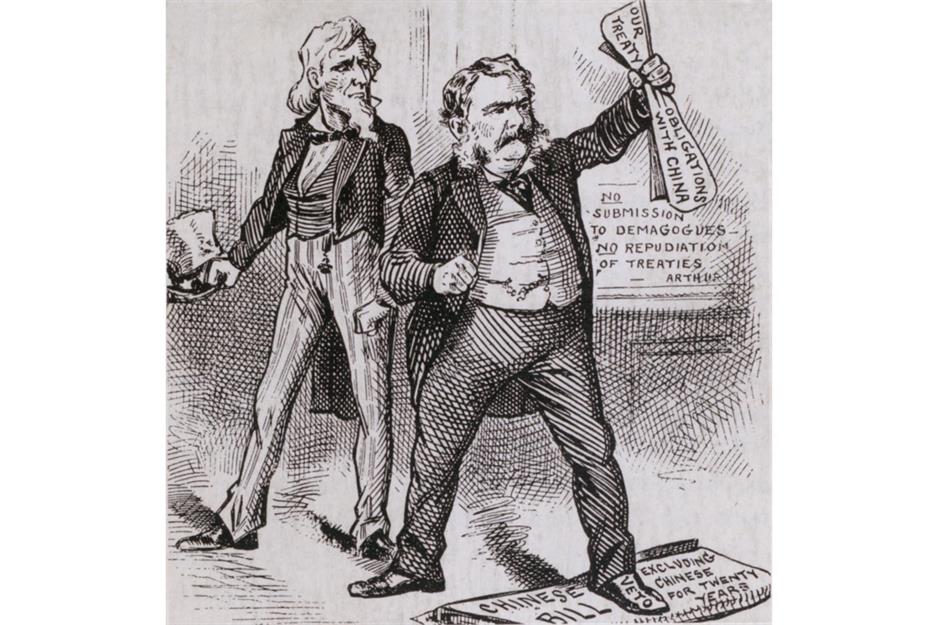
It might sound odd, but Chester A. Arthur earned the nickname the ‘Dude President’, due to his love of silk top hats, shoes and swanky tailored suits. In the 19th century, ‘dude’ meant being a bit of a dandy.
Arthur served as president from 1881 to 1885 during the Gilded Age, but his foppish style and expensive tastes drew criticism from all sides. The moniker was probably still better than Zachary Taylor's 'Old Rough and Ready', James Buchanan’s 'Ten-Cent Jimmy' or 'Sphinx' for Franklin D Roosevelt.
There’s more than one Statue of Liberty
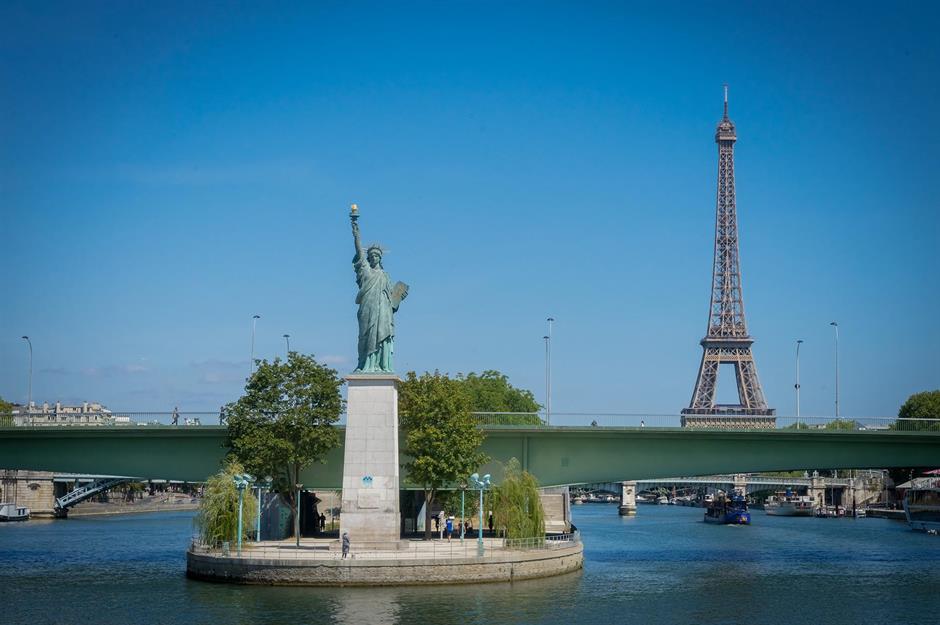
Nothing says 'welcome to America' like the first glimpse of New York's Statue of Liberty, a gift from France to celebrate friendship between the two countries, dedicated on 28 October 1886.
But Lady Liberty is not alone – in 1889, Americans living in Paris gifted France a quarter-sized version to mark the centenary of the French Revolution, and it still sits at Pont de Grenelle. There are several other replicas around France including at the Musee d’Orsay and in Colmar, home of the statue's sculptor, Frederic Auguste Bartholdi.
It could have been called the United States of the Earth
In 1893, Wisconsin representative Lucas Miltiades Miller laid down a proposal to rename the country the ‘United States of the Earth', believing that more states could be added to the Union until it eventually stretched across the entire planet. The proposal was rejected, and Miller was not nominated for a second term in the House.
The world’s first aircraft actually went to the Moon
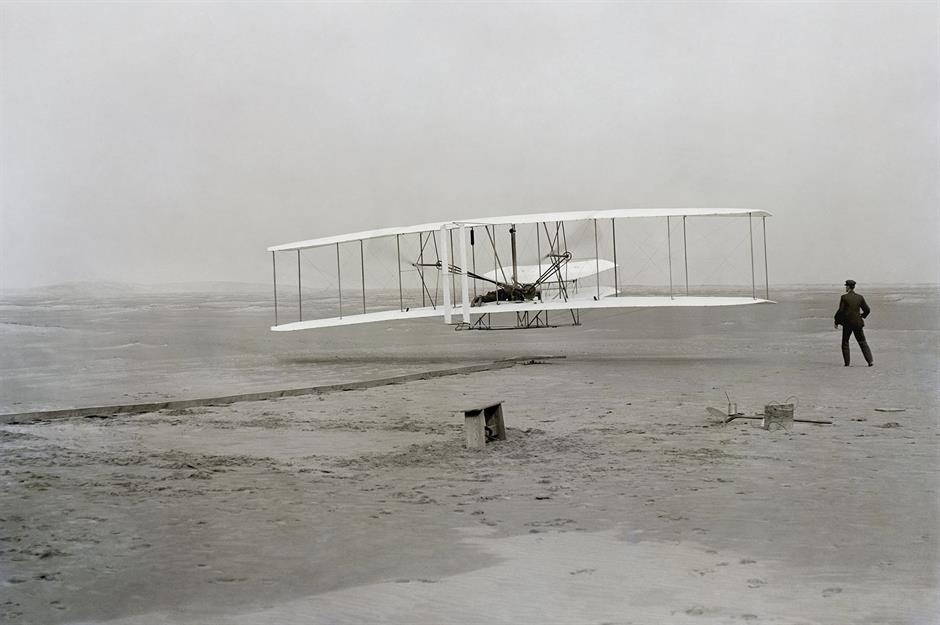
The Wright brothers are the famed inventors of modern aircraft, having designed and piloted the world’s first successful engine-powered plane, the Wright Flyer, which took to the skies in North Carolina on 17 December 1903.
Ohio-born Orville Wright was at the helm, staying in the air for 12 seconds. Neil Armstrong, also an Ohio native, was so inspired by their pioneering spirit that he carried a piece of the Wright Flyer's propeller and left wing in his spacesuit on the first Moon landing in 1969.
The Hoover Dam could stretch coast to coast
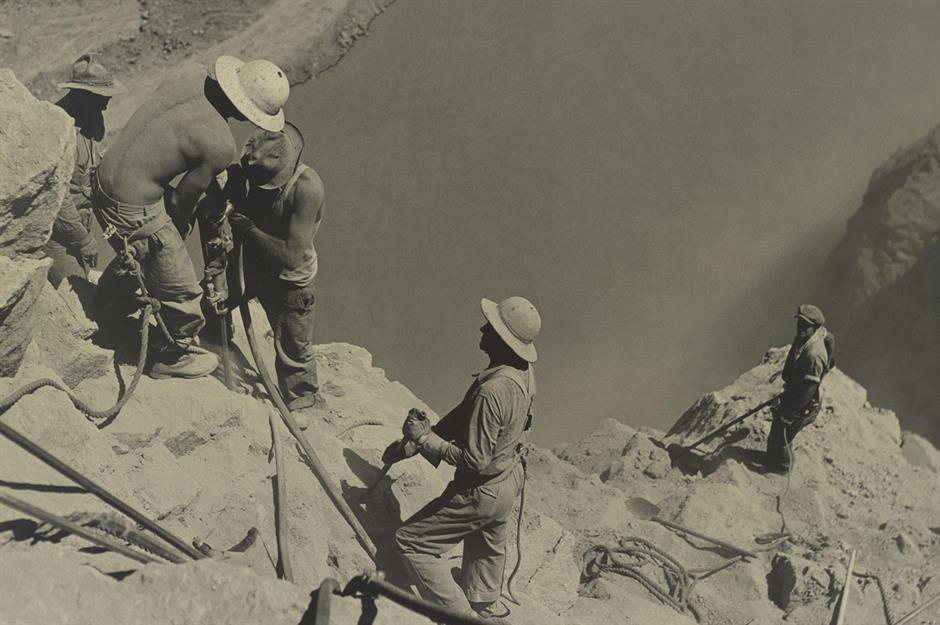
Opened in 1936, the Hoover Dam was the biggest engineering project of its time, standing a colossal 726 feet (221m) high and creating much-needed post-Depression jobs for 21,000 workers.
So much concrete was used in the dam’s construction that it would be enough to build a two-lane highway from New York to Los Angeles, or a four-foot-wide (1.2m) path all the way around the Equator.
Eleanor Roosevelt gave female reporters a leg up

A trailblazer for women, Eleanor Roosevelt broke barriers by giving female reporters exclusive access to her weekly press conferences, allowing them to secure stories in the male-dominated world of journalism. Her first address, on 6 March 1933 – just two days into Franklin D. Roosevelt’s first term – drew 35 female reporters.
Over the next 12 years, she would hold 348 weekly conferences, continuing until her final morning as First Lady in 1945. During these conferences, she covered a wide range of topics, including the serving of beer post-Prohibition, equal pay, pensions and low-cost housing.
Native American 'code talkers' helped win the war
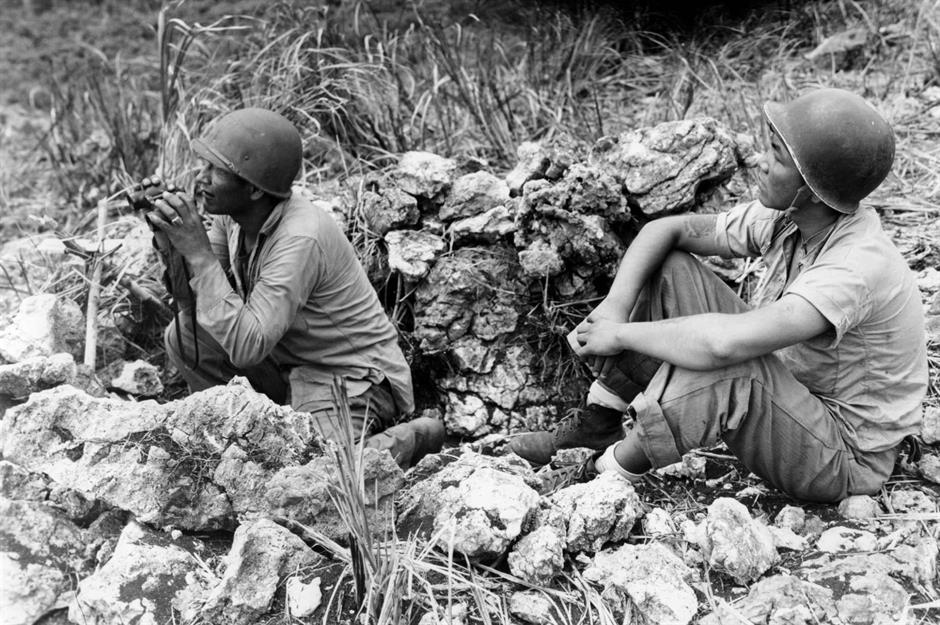
Native American soldiers in both world wars did not receive much recognition at the time, but their contributions were crucial to victory. 'Code talkers' from over 20 Native American nations used their traditional languages to send secret messages that enemy forces could not decode.
Around 534 Native American code talkers served during World War II, primarily in the US Marine Corps, including individuals from the Navajo, Comanche, Meskwaki, Chippewa, Oneida and Hopi communities.
Thanksgiving Day kept moving until the 1940s

Thanksgiving is a staple of the US calendar, but its origins were less consistent. George Washington declared a day of thanksgiving in 1789, but celebrations varied until Abraham Lincoln set it for the final Thursday in November.
In 1939, when Thanksgiving would fall on the last day of the month, shortening the Christmas shopping season, FDR moved it up. This led to two years of confusion, with states observing it on different days, until a 1941 resolution fixed it to the fourth Thursday of November, accounting for years with five Thursdays.
A 17-year-old designed the US flag
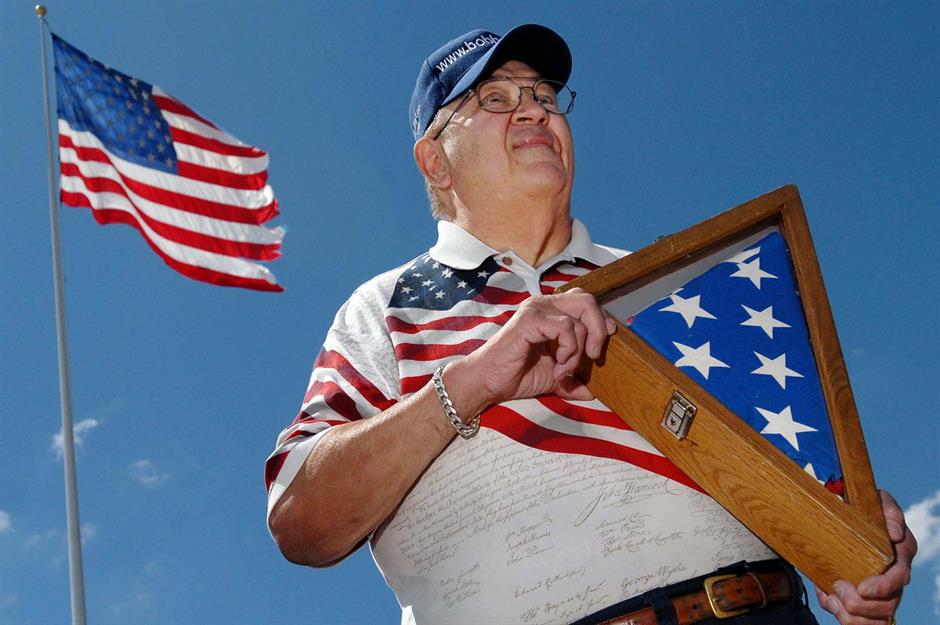
The US flag has had several redesigns, but the one we know today was created by none other than a 17-year-old high school student. In 1958, Bob Heft from Ohio designed a 50-star flag for a history project, earning a 'B' from his teacher.
Heft sent his design to his congressman, Walter Moeller, who helped get it submitted for a national redesign competition. The design won, and in 1960, President Eisenhower officially adopted it – turning a high school project into a national symbol.
London Bridge is actually in Arizona
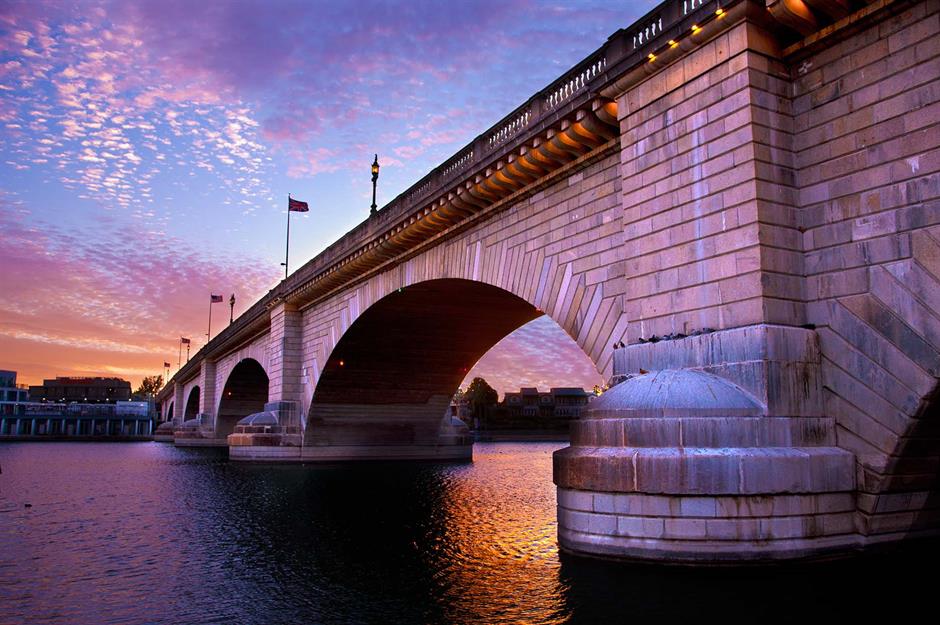
Here’s a fun trivia tidbit – London Bridge can be found not spanning the Thames, but Arizona's Lake Havasu. The original British bridge survived the Blitz but struggled with modern traffic and was set to be demolished. Enter Robert McCulloch, an eccentric Missouri entrepreneur.
In 1968, McCulloch purchased the bridge for $2.46 million (£1.9m), shipped it brick by brick to his development at Lake Havasu City, and rebuilt it to attract tourists. Most thought he was foolish, but the town prospered, and London Bridge remains its top attraction.
The first words on the Moon may have been misquoted
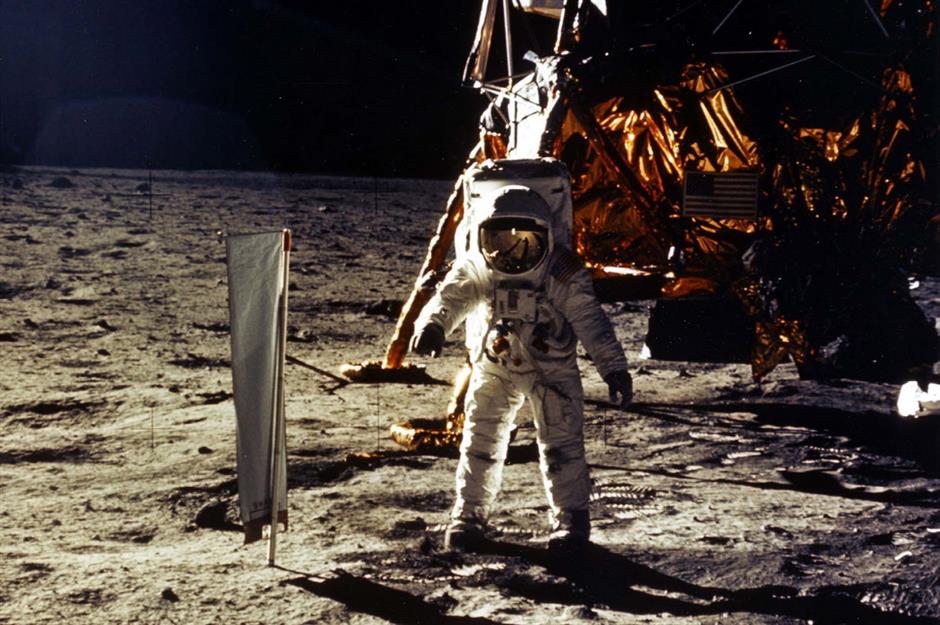
Everyone is familiar with the footage of the incredible Moon landings on 20 July 1969 and the inspiring words of Neil Armstrong, the first man on the Moon. But what did he really say? The famous quote is: "That’s one small step for man, one giant leap for mankind."
Yet, Armstrong claims he actually said, "one small step for a man", and the broadcast relay just didn’t pick up the 'a'. Despite in-depth analysis and reports that Armstrong confirmed the extra article, it hasn’t been definitively proven.
A $10,000 bill used to be in circulation

You may have heard of 'Benjamins' – slang for $100 bills featuring Benjamin Franklin – but have you heard of 'Salmons'? In 1878, a $10,000 bill entered public circulation, surpassed in value only by the $100,000 bill, which was issued solely for transferring funds between Federal Reserve Banks.
Unlike other denominations featuring presidents, the $10,000 bill displayed Salmon P. Chase, President Lincoln's Treasury Secretary. The bill, which stopped being produced in 1969, has become a collector's item – one from the 1934 series sold for $480,000 (£370,000) in 2023.
America’s wild horses date back to the 1500s
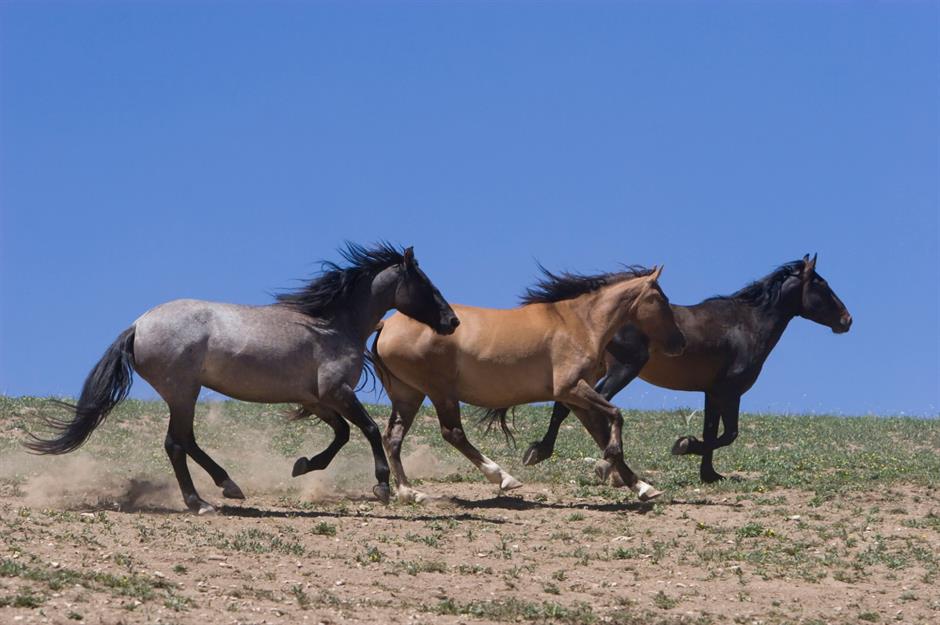
Symbolic of the American West, wild horses, or ‘mustangs,’ were first brought to the Americas in the 1500s by Spanish conquistadors. These horses, which became feral over time, have since interbred with domestic horses. Today, around 70,000 mustangs roam freely across 10 states, including Nevada, Wyoming and New Mexico, and can trace their lineage back over 500 years.
Wild horses can also be found on islands off the east coast, including Maryland, Georgia and North Carolina. One theory suggests that they swam ashore from shipwrecked Spanish vessels, though other theories about their introduction exist.
Lincoln was a wrestler and bar owner
.jpg)
Did you know that the 16th president was a skilled wrestler and a licensed tavern owner? In his youth, the six-foot-four (1.93m) Abraham Lincoln was proficient in 'catch-as-catch-can’ frontier wrestling, becoming county champion and later being inducted into the National Wrestling Hall of Fame.
In 1833, he and a friend opened a store in New Salem, Illinois, which was issued a tavern (liquor) license. The business eventually failed, partly due to mismanagement, including his partner drinking away the profits. Lincoln, of course, moved on to greater things.
The last Civil War pension was paid in 2020
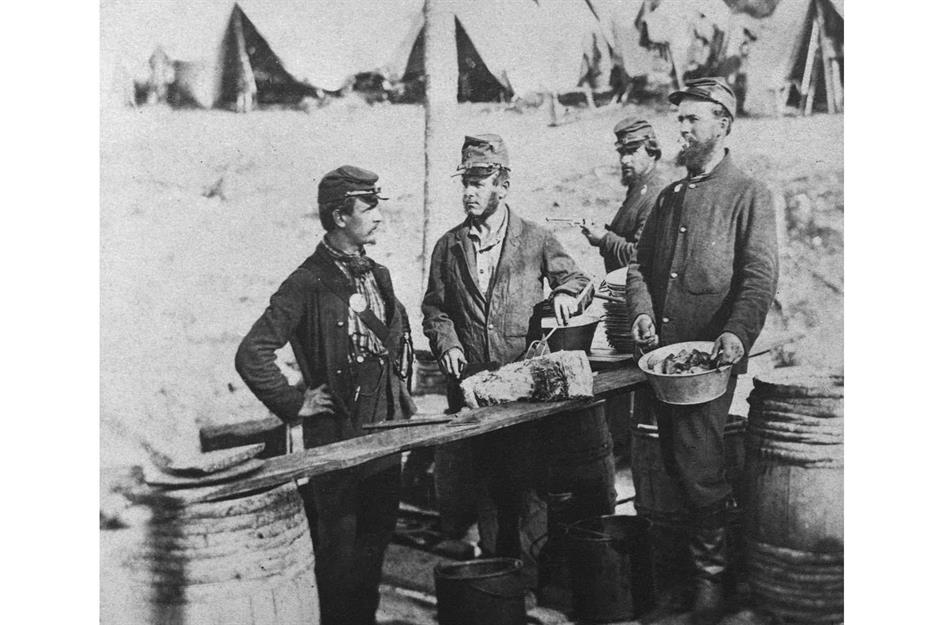
The American Civil War ended in 1865, but the Department of Veterans Affairs continued paying survivor benefits more than 150 years later. Mose Triplett fought for the Confederacy before defecting to the Union, and began receiving his pension 20 years after the war ended.
Later, he remarried, and his daughter Irene, born in 1930 when he was 83, was eligible for a monthly pension of $73.13 (£57.57). She continued to receive the pension until her death in 2020 at the age of 90.
Now discover the most eccentric attraction in every US state
Comments
Be the first to comment
Do you want to comment on this article? You need to be signed in for this feature